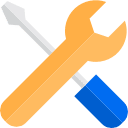Best solar inverter buying guide
When the sunlight falls on solar panels, the current generated cannot directly be used to power your house. This direct current needs to be converted to an alternating current to run your electronic devices. It’s the most intricate part of a solar power system and is also likely to fail first.
This article will help you choose from the variety of inverters available and make the right decision.
Working on a solar inverter
A solar inverter converts the direct current (DC) from the solar energy generated by the solar panels into alternating current (AC). This can then be used to power your house and all-electric appliances. The inverter is usually a box on the wall or could be also installed on the roof itself.
What are the types of inverters?
While getting an inverter you need to keep in mind that it is Clean Energy Council (CEC) approved. It should also meet the Australian standard AS 4777. All big brands are usually CEC certified but make sure you get this checked before you go ahead with your installation.
String inverters:
These are the standard type of inverters, very commonly used. They are very simple to install and most budget-friendly.
The inverter is connected to a string of panels and is mounted on a wall.
There’s one drawback. Since the panels are all connected in series, even if the output of one-panel drops (due to shading, damage, etc.), the whole system output will drop.
Microinverters:
Every panel can have its own microinverter. These are installed with each panel on the roof.
These are comparatively more costly than string inverters.
The efficiency of a microinverter installation can be 12% more than that of a string inverter because of lesser impact from shading etc.
These are a good option when you don’t have a large roof surface area and when shading is unavoidable. Microinverter also adds the flexibility of adding more panels at a later stage.
Hybrid inverters:
Hybrid inverters are like string inverters but with an additional capacity to connect storage batteries.
These are comparatively more pricey than string inverters.
Compatibility of the battery with the inverter is very important. Keep this in mind while buying your inverter. Your choice of inverter shouldn’t restrict you from buying the best battery as per your needs.
Battery inverters:
These can be used when you need to connect a battery to an existing system.
These inverters convert the battery current into alternating current and also transfer solar power to the battery for storage.
How do I determine the size of the inverter?
Inverter size is determined by the size of your panel array. Size of an inverter is the maximum solar generated power it can handle. It is expressed in kilowatts (kW).
Calculating the inverter size:
There are certain rules defined by the CEC and every solar power system needs to adhere to these in order to qualify for STCs for the rebate.
An inverter must have its maximum output capacity no less than 75% of the solar array capacity.
Alternatively, the solar array capacity can be upto 133% of the inverter capacity.
Installation of an inverter
There are a few things to consider about where an inverter should be installed. String, battery, and hybrid inverters must be set up on a wall near the main switchboard. Extreme heat can cause damage to the inverter. They are mostly water proof.
If the inverter is located in an easily accessible area, it could be an easy lift for a thief. So, pay attention to safety and look out for the correct place of installation accordingly.
Costing of a solar inverter
Cost depends on the size and brand of the inverter. Different types of inverters have different price ranges:
String inverters: $1000 – over $2000
Microinverter: $200 (cost per unit) A system that has microinverters, usually costs 20% more than an equivalent string inverter system.
Hybrid inverters: $1000 – $2000
Battery inverters: $2000 – $3000
(These are the usual price ranges and the cost can be more than this depending on the brand you chose.)
Solar inverter warranties
Inverter warranties are generally for 5 years. Try and look for a 10-year warranty as some brands do offer that. This will cover the probable lifespan of the inverter. You could also get an extended warranty if you paid extra.
Know your inverter
After the installation, it’s good to understand the controls of the inverter. It will have some display and indicator lights. Understand what they mean. In case of any problems, you’ll be able to detect them early and might protect your system from huge damage. Keep a periodic check on your solar power system. This will also help you understand your solar consumption so that you use your system to its maximum potential. You definitely don’t want to look at your electricity bill and be shocked to find that you have been using grid electricity instead.
Indicator panel and display lights:
An inverter’s display panel can indicate the current power production and other long-term data.
System’s power information like, is it functioning normally, any faults, electricity feeding into the grid, etc. can be known through indicator lights. Make sure to keep a regular check to prevent any faults or errors.






Leave a Reply
Want to join the discussion?Feel free to contribute!